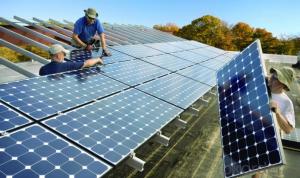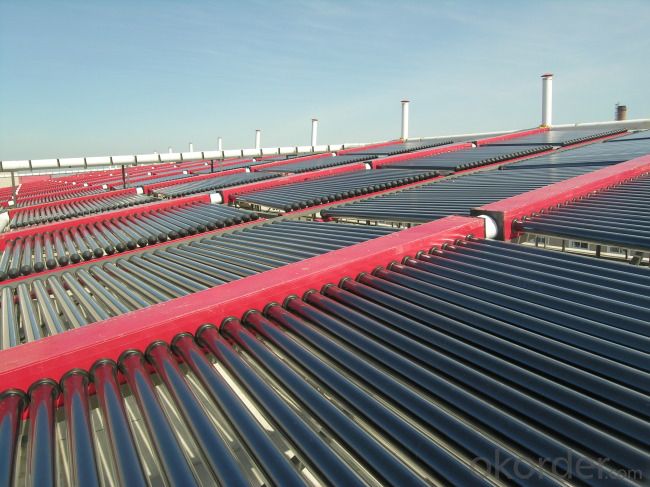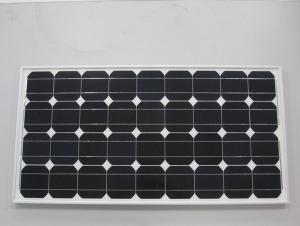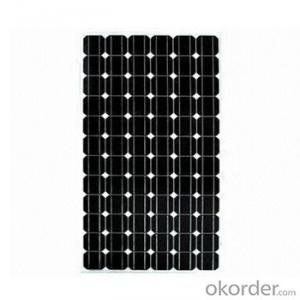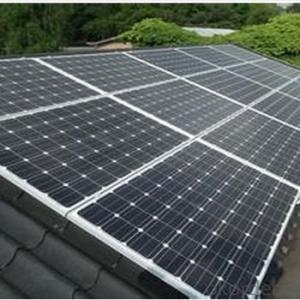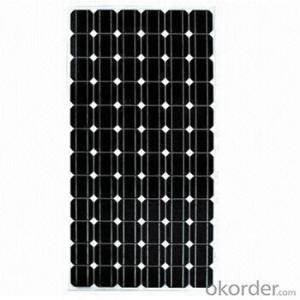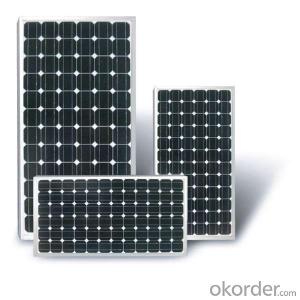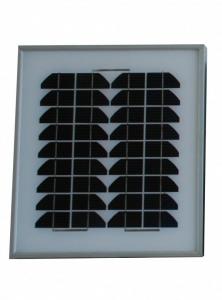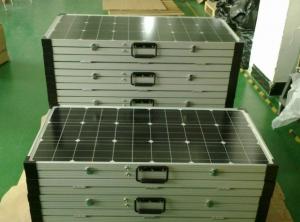Utah Solar Panels - Solar Monocrystalline Series I (175W-195W)
- Loading Port:
- Shanghai
- Payment Terms:
- TT OR LC
- Min Order Qty:
- 1000 watt
- Supply Capability:
- 20000000 watt/month
OKorder Service Pledge
OKorder Financial Service
You Might Also Like
Specification
1.Structure of Solar Module Description
Solar panel refers either to a solar hot water panel, a common type of a solar thermal collector, or to one or more solar photovoltaics (PV) modules, electrically connected and mounted on a supporting structure.
A PV module is a packaged, connected assembly of typically 6×10 solar cells. Solar PV panels constitute the solar array of a photovoltaic systemthat generates and supplies solar electricity in commercial and residential applications. Each module is rated by its DC output power under standard test conditions, and typically ranges from 100 to 320 watts. The efficiency of a module determines the area of a module given the same rated output – an 8% efficient 230 watt module will have twice the area of a 16% efficient 230 watt module. There are a few solar panels available that are exceeding 19% efficiency. A single solar module can produce only a limited amount of power; most installations contain multiple modules. A photovoltaic system typically includes a panel or an array of solar modules, an inverter, and sometimes a battery and/or solar tracker and interconnection wiring.
2.Main Features of the Solar Module
1).High conversion efficiencies resulting in superior power output performance.
2).Outstanding power output even in low light or high temperature conditions
3).Optimized design for ease of soldering and lamination
4).Long-term stability,reliability and performance
3.Limits of the Solar Module
Operating Temperature ﹣40℃to+85℃
Storage Temperature ﹣40℃to+85℃
Max System Voltage 1000VDC(IEC)/600VDC(UL)
4.Specifications of the Solar Module
Material | the Solar Module |
Cell | Monocrytalline Cell 125X125 mm |
Packing | Pcs/40ft (H) Container |
| Weight | 15.5kg |
| Tolerance | 0~+5W |
Certificate | TUV VDE UL |
5.Applications of the Solar Module
1.Electricity
2.Heat energy
6.IMages of the Solar Module
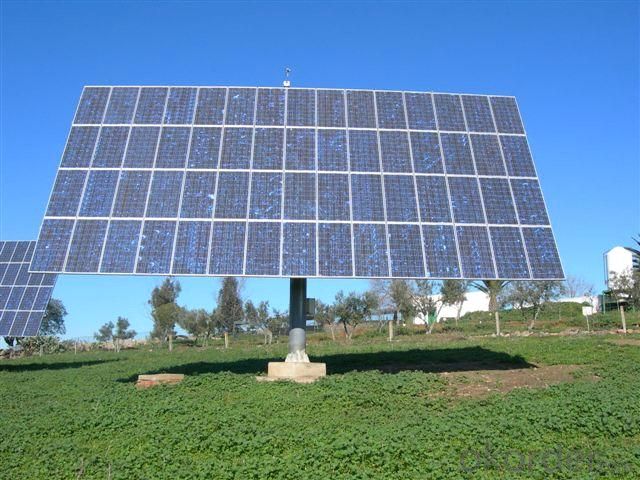

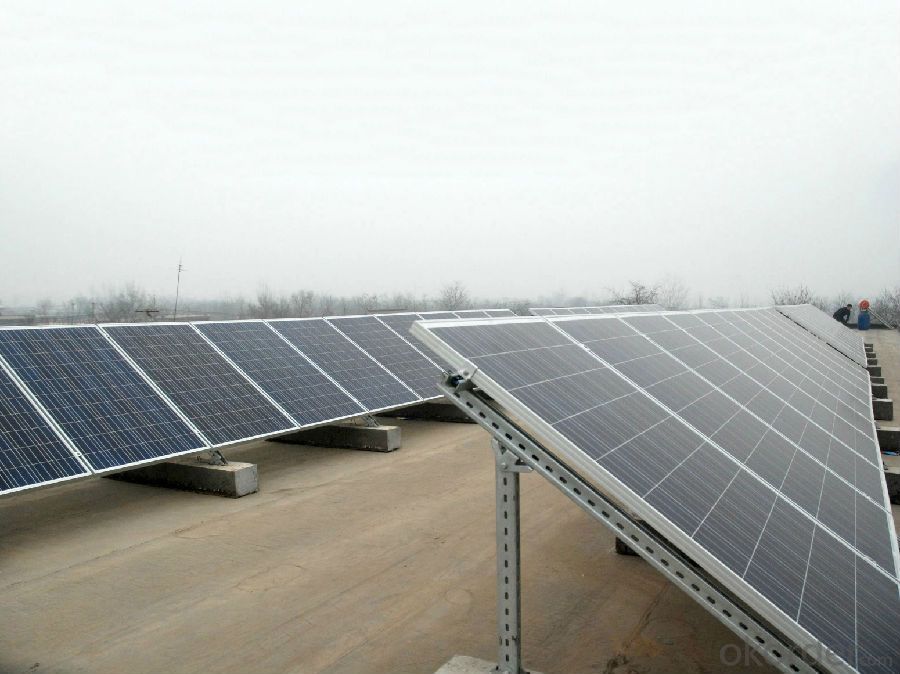
FAQ
1. Q: Do you have your own factory?
A: Yes, we have. Our factory located in Jiangyin city, jiangsu province.
2. Q: How can I visit your factory?
A: Before you take off from your country, please let us know. We will show you the way,or arrange time to pick you up if possible.
3. Q: Do you provide free sample?
A: Usually we do not offer free sample
4. Q: Could you print our company LOGO on the nameplate and package?
A: Yes, we can do that.
- Q: I am confused. I am planning to build a simple 2Watt solar system to power some lights in my house. . I wonder if it is possible to power up a 2Watt bulb using 2Watt solar power?2. Normally, when we are reading the power rating of a bulb, we will read the wattage, so what about the voltage and current rating?3. If the current is insufficient, will the bulb light up?I am having a solar panel that can output 2W power but I am not sure about the output voltage, how can I find out about the current? I am getting really confused.
- Unlikely - at least not a full brightness. You have to match voltages. If your panel is 2v at amp, it won't run a 20v bulb that runs at /0 amp. You're also going to lose power in the wiring and other components that means the 2w panel won't really deliver its full rating. And I'm also guessing that the 2w of the panel is only under full, bright sunlight, so any lessening of the light; clouds, haze, fog, dust, will lessen the power available.
- Q: When I make a solar panel, what do I use to store the energy. For example I am going to make a solar panel to power my lights in my room. But I dont want the lights only to come on when the sun is out because that would be very pointless. So... Do I use the panels to charge something like a car battery and then run wires from the battery to an extension chord which will go to a surge protector? It sounds awesome, but I have to put it all together. The help is very appreciated. Thank you guys.
- First of all you seem to be talking about making a solar photovoltaic panel instead of a solar thermal panel. Most solar panels will produce DC electricity. Your house uses AC electricity. You can set up the solar photovoltaic panels to send their current to charge a battery bank and then you can tap into that battery bank and send the power to a voltage inverter to change the power to AC. The better inverters will do a better job of this. The system has to be matched and sized properly. If you are not familiar with electrical work you should have someone who is more knowledgeable help or do the work. Good luck with your project.
- Q: can solar power panels installed at home provide enough electricity to power house hold appliainces and heat water.
- It will take about $44,000 to put enough solar panels to provide the same amount of power that you now have coming from a 220 v 00 amp power line to your house. You should also realize that you need some method of storage for use at night or dark days. This will add another $7,000 to the cost. The only real solution for the energy problem is nuclear power.
- Q: Can solar panels be installed on factories or manufacturing facilities?
- Yes, solar panels can definitely be installed on factories or manufacturing facilities. In fact, these large industrial buildings often have expansive roof spaces that are ideal for installing solar panels. By harnessing solar energy, factories and manufacturing facilities can significantly reduce their reliance on traditional energy sources, lower their carbon footprint, and potentially save on electricity costs in the long run.
- Q: How do solar panels impact the electricity bill?
- Solar panels can significantly reduce or even eliminate electricity bills as they generate clean and renewable energy from the sun, reducing the reliance on traditional grid electricity. By harnessing solar power, homeowners and businesses can offset their electricity consumption and potentially earn credits by feeding excess electricity back into the grid. This can lead to substantial savings and a more sustainable energy future.
- Q: first of all, to be honest i have totally no idea on how a solar panel works.my task is to design something like a solar powered street lamp which store sun energy during day time and convert it into electrical energy then light energy so that the lamp can work during night time.any ideas on how to design the solar panel? which can store enough or more enegry in case there is no sunlight another day. and low cost as well :D
- You okorder /
- Q: Can solar panels be used to power a construction site?
- Yes, solar panels can be used to power a construction site. They can provide a clean and renewable source of energy to run the equipment and machinery needed for construction activities. By utilizing solar power, construction sites can reduce their reliance on fossil fuels and lower their carbon footprint.
- Q: How do solar panels affect roof weight load?
- Solar panels can increase the weight load on a roof, but their impact is generally minimal. The weight of solar panels is usually evenly distributed across the roof surface, and most roofs are designed to handle this additional load without any issues. However, it is recommended to consult with a professional to assess the roof's structural integrity and ensure it can support the added weight of solar panels.
- Q: How much electricity can a solar panel generate?
- The amount of electricity a solar panel can generate depends on various factors such as the size and efficiency of the panel, the amount of sunlight it receives, and the location. On average, a standard solar panel can produce anywhere from 250 to 400 watts of electricity per hour.
- Q: Can anyone give me some info on how to figure how many panels needed for a 0 volt 2 amp pool motor. Thanks/ Run 5 hours a day
- You okorder /
Send your message to us
Utah Solar Panels - Solar Monocrystalline Series I (175W-195W)
- Loading Port:
- Shanghai
- Payment Terms:
- TT OR LC
- Min Order Qty:
- 1000 watt
- Supply Capability:
- 20000000 watt/month
OKorder Service Pledge
OKorder Financial Service
Similar products
Hot products
Hot Searches
Related keywords
